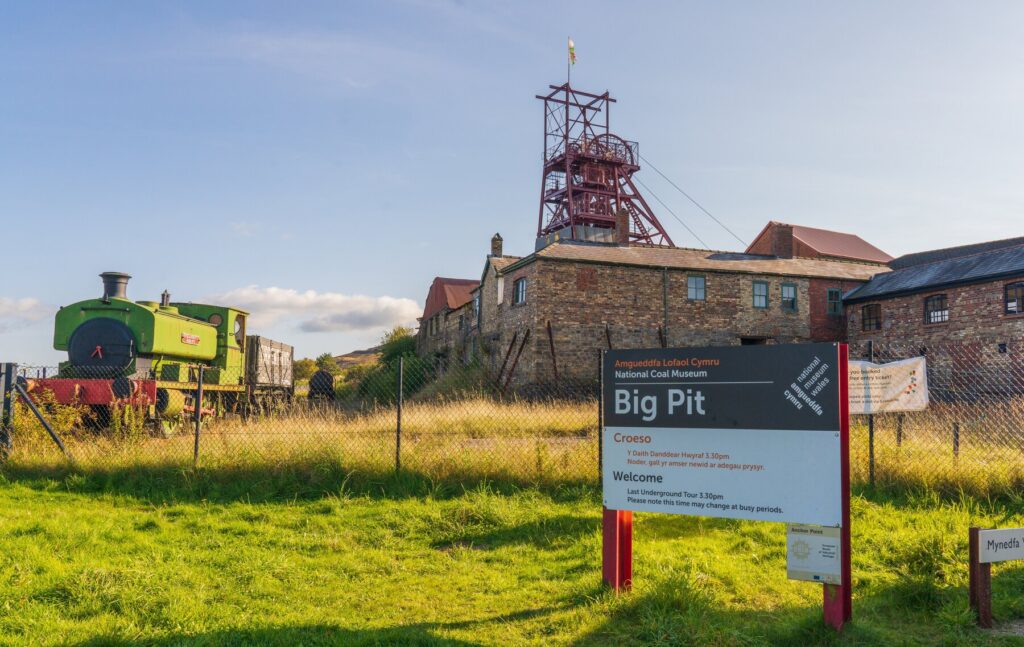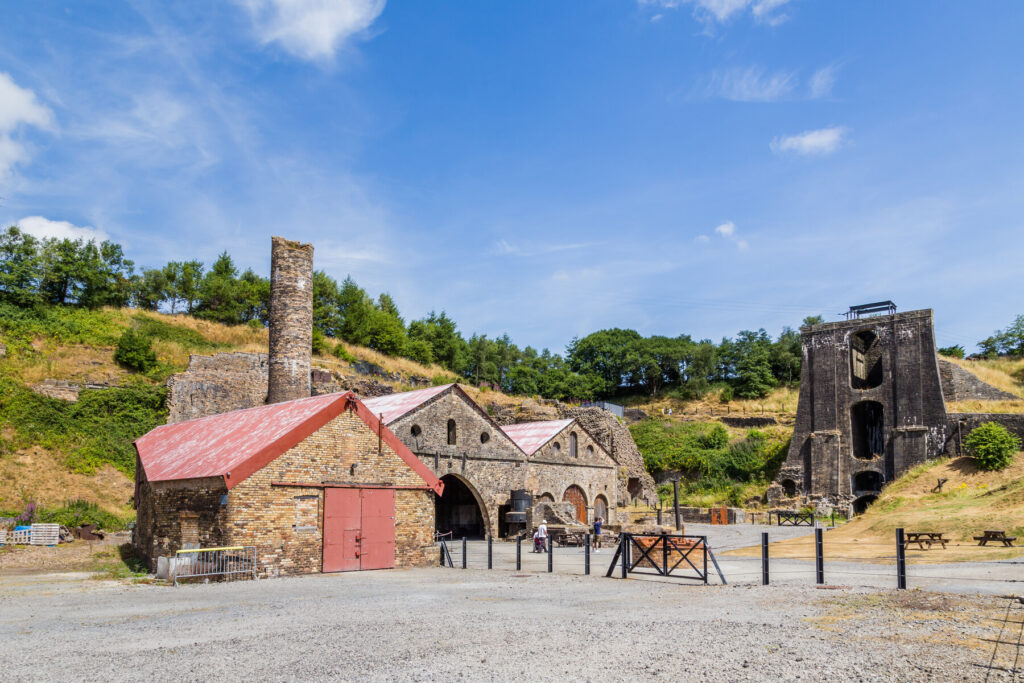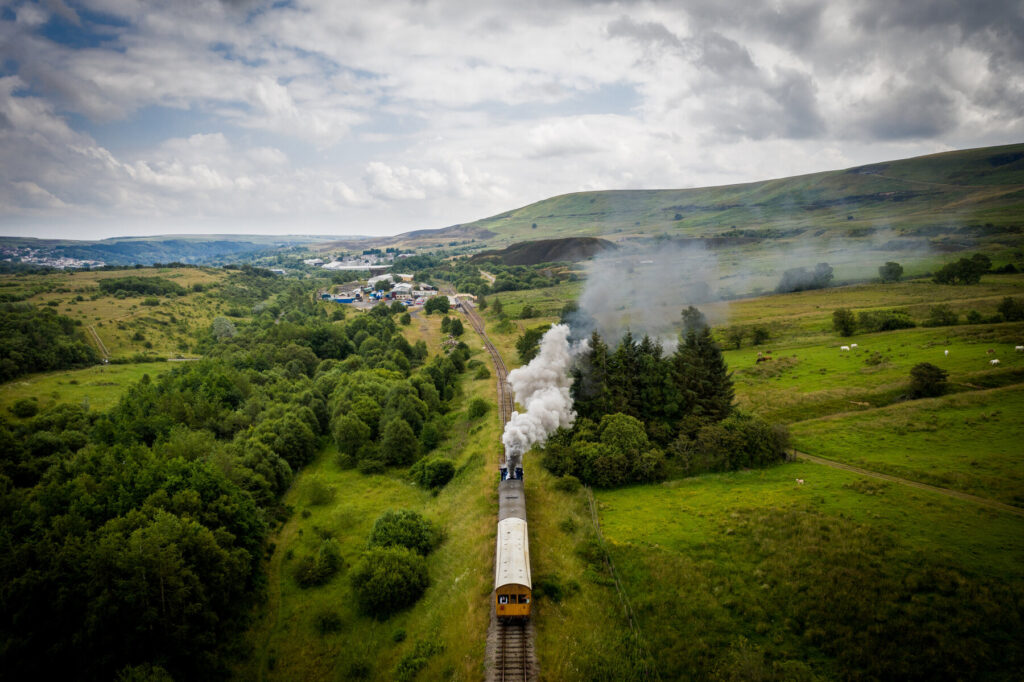Huddled under rolling moorland, Blaenavon is the archetypal Welsh mining streetscape of ruler-straight stone or rendered terraces of two-up, two-down houses.
True, it can be bleak here when the wind and rain come off the Brecon Beacons, and walking around, there’s an oddly melancholic air about the place, something that’s apparent in its tatty shop frontages and boarded-up pubs. But Blaenavon’s doughty community spirit remains intact and you’ll be greeted warmly.
During the 19th century, Blaenavon was pre-eminent among the world’s coal and iron-ore producers, and for this, the town and surrounding landscape was inscribed on UNESCO’s World Heritage List in 2000, the second in Wales and currently one of just four in total in the country.
Today this legacy is brilliantly brought to bear in a brace of heavyweight attractions: the enduringly popular Big Pit, and the awesome Blaenavon ironworks – add the Pontypool and Blaenavon steam railway into the mix and there’s more than enough here to warrant a full day’s exploration.
What to see and do in Blaenavon
Blaenavon Heritage Centre
The logical place to start is the Blaenavon Heritage Centre, which rates its own little nugget of history, for this is the oldest surviving works’ school building in Wales, built in three phases between 1816 and 1860. Interestingly, when it opened there were 120 children on the roll, a much lower number than those actually working the pits and ironworks.
In the adjacent grounds, the parish church of St Peter is worth a peek for its collection of cast-iron tomb covers and pillars – even the font is made from iron. It was built by the town’s ironmasters Hill and Hopkins, both of whom are buried here in iron-topped tombs, and consecrated in 1805 – if it’s not open, you can get the key from the heritage centre.
Big Pit
With its towering steel headframe standing sentinel, Big Pit is not only one of South Wales’s most popular visitor attractions, but it’s also the Valleys’ most authentic mining experience. Moreover, tours are led by ex-colliery personnel who entertainingly convey the hardships of life underground.
Although parts of Big Pit technically date to the early 19th century, it was opened officially in 1860, before being sunk to its present depth of 300ft in 1880. Kitted out with helmet, lamp and battery pack, visitors are lowered to a depth of 300ft in the original cages, before the walk along a labyrinthine web of tunnels to the old coal face.

Back above ground, you can make a bit more sense of what you’ve just experienced in a couple of exhibitions, one an audio-visual presentation entitled King Coal: The Mining Experience, and another in the old pithead baths. Constructed in 1939 and one of around 400 built throughout Britain during the inter-war period, the baths had heated lockers, and also incorporated a canteen, medical rooms and laundry.
Blaenavon Ironworks
Blaenavon’s magnificent ironworks is one of the most complete sites of its kind anywhere in the world, yet it wasn’t so long ago (the 1970s) that they were slated for demolition, before being taken into the care of the state. Established in 1788 under the partnership of Thomas Hopkins, Benjamin Pratt and Thomas Hill, the enterprise was set up with astonishing rapidity.

The site’s dominant structure, and its finest architectural specimen, is the hulking balance tower where water diverted from a stream was used to lift raw materials from the yard below on to tramlines and thence the Brecknock and Abergavenny canal. You can walk to the top of the tower via a looped path, from where there’s a superb bird’s-eye view of the site.
Opposite the cast house is Stack Square, another of the site’s original 1788 buildings and comprising Middle Row and Engine Row. A rare example of early iron company housing, these tiny limewashed cottages would have originally been home to specialist workers brought here to set up the ironworks, before being converted into more humble dwellings for lower-paid labourers.
Pontypool and Blaenavon Steam Railway
Just under 2 miles northwest of the town centre on the A4248 road between Blaenavon and Brynmawr, a signpost invites railway enthusiasts to the Pontypool and Blaenavon Steam Railway, and while there may be more scenic heritage rides in Wales, this is still an enjoyable little outing.

Built by the Brynmawr and Blaenavon Railway in 1866 before it was leased to the London and North Western Railway in 1869, the line operated as the main line for Big Pit until 1980, before its reincarnation just three years later as a heritage railway. For the best views, sit on the right-hand side heading out to the Whistle Inn halt, and on the left-hand side going in the other direction. Reckon on about an hour for the entire trip.
Travel to Blaenavon
Blaenavon lies a few miles south of the A465 and is linked to Pontypool by the A4043 and Brynmawr by the B4248. There are plenty of free car parks in town, including the Prince Street car park next to the Queen Victoria pub below the heritage centre, although you can just as well park at the ironworks and reach everywhere from there.
Blaenavon has no train station, so you’ll be reliant on buses if travelling by public transport. From Pontypool in the south, bus #X24 makes the trip every 15 minutes (hourly on Sun), continuing down to Newport, while bus #31 makes the short journey across to Brynmawr every hour (Mon–Sat). Buses stop on the High Street, near the junction with Burford Street.